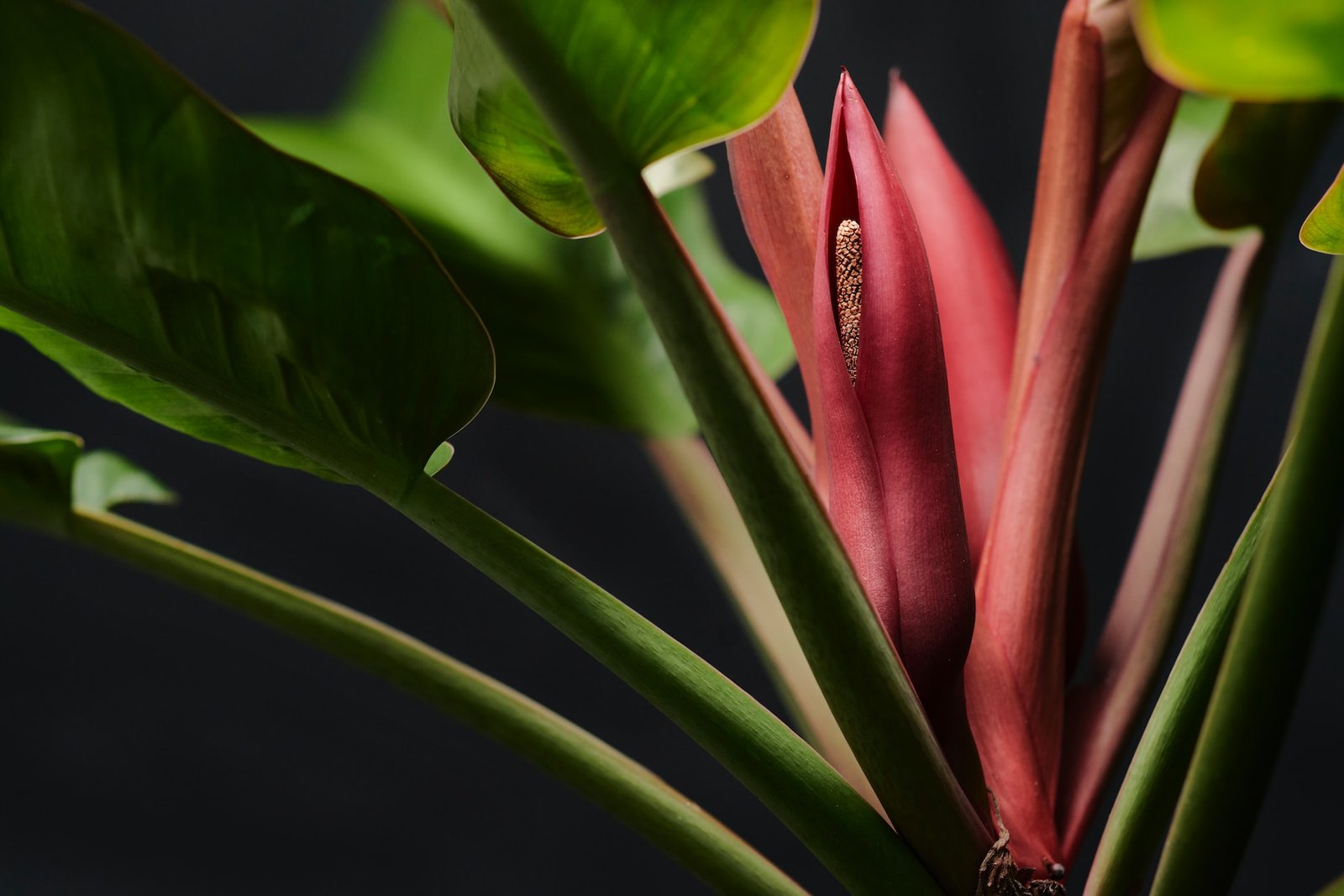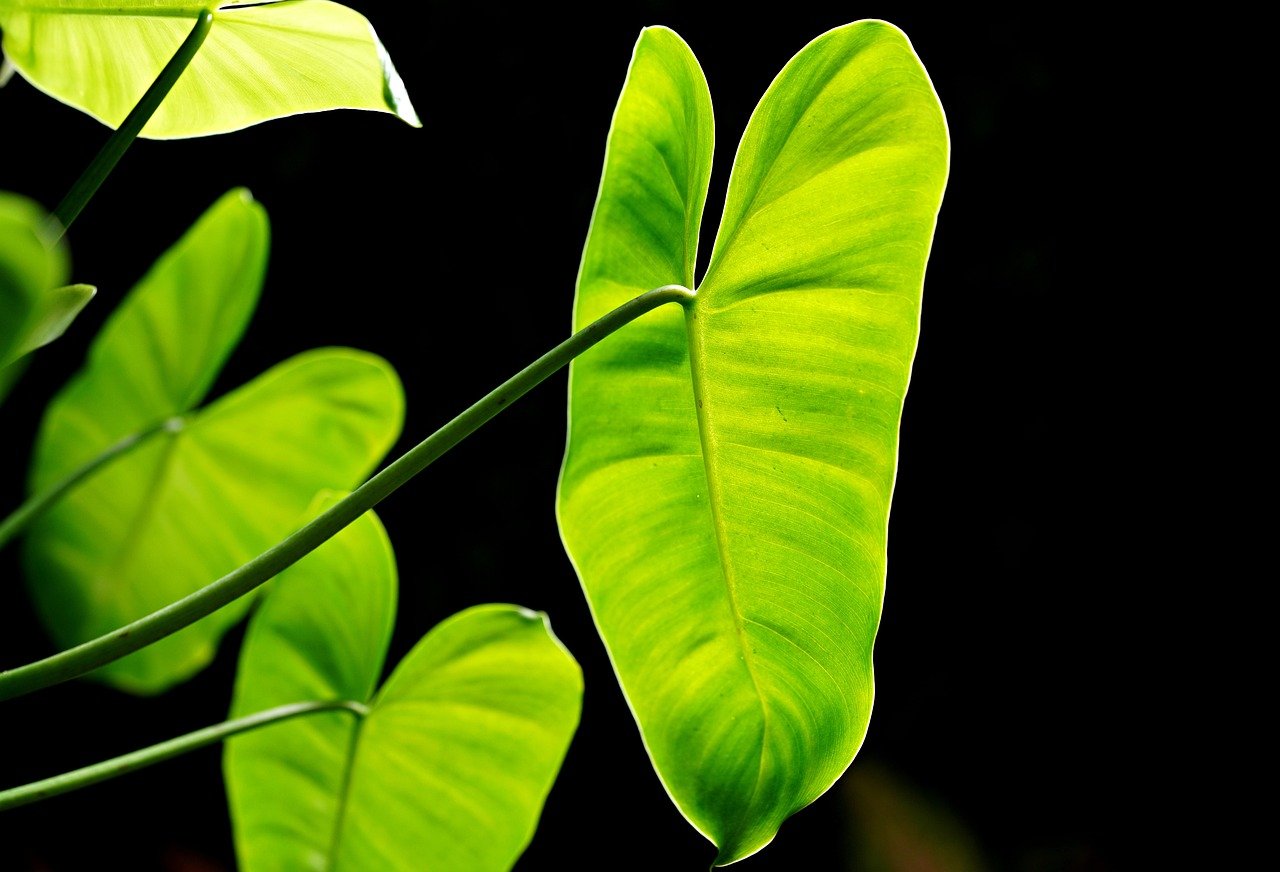Introduction to Philodendron Red Emerald
The Philodendron Red Emerald, scientifically known as Philodendron Erubescens, is a captivating indoor plant that originates from Colombia. This plant is renowned for its heart-shaped foliage and vibrant red stems, which make it a standout addition to any indoor plant collection. The leaves of the Red Emerald are a deep green color, with the red coloration becoming more pronounced on the veins and stems.
The Philodendron Red Emerald has gained significant popularity among plant enthusiasts and interior decorators alike. Its unique coloration and easy-care nature make it a preferred choice for adding a touch of nature to indoor spaces. The plant’s climbing nature also makes it an excellent choice for vertical gardens or hanging baskets.
The Red Emerald is not just a pretty face; it’s also an air-purifying plant. It’s known to improve indoor air quality, making it not only aesthetically pleasing but also beneficial for health. For more detailed information about this plant, you can visit Nochi Cares, a resource dedicated to plant care and information.
Why It’s a Popular Houseplant
One reason for its popularity is that it’s very easy to care for. Even if you’re not experienced with plants, you can keep this one alive without any major issues.
It requires only minimal watering, indirect sunlight, and basic fertilization during the growing season. Additionally, it’s a versatile plant that can grow in various environments.
You can keep it in an office or home setting as long as it doesn’t receive direct sunlight which could damage or burn the leaves. This makes it perfect if you have pets since these furry friends tend to like munching on indoor plants.
Another reason why people love this plant is because of how beautiful it looks. The large green leaves feature bright red stems that make them stand out even more.
And while most plants lose their vibrant colors after some time, this one only gets prettier as they age and mature! Philodendron Red Emeralds are hardy yet stunning plants that do well almost anywhere indoors!
Characteristics of Philodendron Red Emerald
Physical Characteristics
The Philodendron Red Emerald is a sight to behold with its unique physical characteristics. The most striking feature of this plant is its leaves. They are heart-shaped, a common trait among Philodendrons, and exhibit a deep green color. The leaves’ color is beautifully contrasted by the vibrant red coloration on the veins, giving the plant its ‘Red Emerald’ name.
The stem of the Red Emerald is another notable feature. It displays a rich red wine color, which further enhances the plant’s overall aesthetic appeal. This combination of deep green leaves and red stems makes the Red Emerald a visually stunning plant that can add a pop of color to any indoor space.
Growth Pattern
The growth pattern of the Philodendron Red Emerald is another aspect that sets it apart. It is a climbing plant, which means it grows upwards by attaching itself to a support. This climbing nature makes it a great choice for vertical gardens or for draping over shelves and cabinets.
When it comes to indoor vs outdoor growth, the Red Emerald is quite versatile. It can grow in both environments, but it thrives best indoors where the conditions can be controlled. The plant prefers bright, indirect light and can even tolerate low light conditions, making it a suitable choice for indoor spaces with limited natural light.
The Red Emerald’s growth pattern and adaptability to various light conditions make it an easy-care plant that’s perfect for beginners and seasoned plant parents alike.

Caring for Philodendron Red Emerald
Light Requirements
The Philodendron Red Emerald is not particularly fussy about light. However, it does best in bright, indirect light. Direct sunlight can cause the leaves to burn, while too little light can lead to leggy growth and loss of color. If you’re growing this plant indoors, placing it near a north or east-facing window would be ideal.
Watering Needs
When it comes to watering, the Red Emerald prefers its soil to be kept consistently moist but not waterlogged. Overwatering can lead to root rot, a common issue with many indoor plants. A good rule of thumb is to water the plant when the top inch of soil feels dry to the touch. It’s also important to ensure that the plant is in a pot with good drainage to prevent water from sitting at the bottom.
Soil Preferences
The Philodendron Red Emerald prefers a well-draining soil mix. A mixture of peat moss, perlite, and potting soil usually works well. This plant likes its soil to be slightly acidic, so adding a bit of sphagnum peat moss can help maintain the right pH level. It’s also beneficial to occasionally add organic matter to the soil to provide the necessary nutrients for the plant’s growth.
Temperature Tolerance
The Red Emerald is a tropical plant and as such, it prefers warm temperatures. It can tolerate a wide range of indoor temperatures, but it does best between 65°F and 80°F. The plant is not cold-tolerant and temperatures below 50°F can cause damage. It’s also sensitive to cold drafts, so it’s best to keep it away from drafty windows or doors during the colder months.
Caring for a Philodendron Red Emerald might seem like a daunting task, but with the right knowledge and a bit of attention, it’s quite manageable. For more detailed care instructions, check out this care guide by The City Wild.
Uses and Benefits of Philodendron Red Emerald
As an Indoor Plant
The Philodendron Red Emerald makes an excellent indoor plant due to its attractive appearance and easy-care nature. Its vibrant red stems and deep green leaves can add a pop of color to any indoor space. Plus, it’s a climbing plant, making it a great choice for vertical gardens or hanging baskets. Additionally, the Red Emerald is known to improve indoor air quality, making it not only aesthetically pleasing but also beneficial for health.
Lesser-Known Biology and Behavior Details
Did you know that Philodendron Red Emerald is toxic to pets? This is because it contains calcium oxalate crystals that can cause irritation and swelling if ingested. If you have pets, be sure to keep your plants out of reach or opt for pet-friendly indoor plants instead.
The plant’s leaves are also interesting from a biological perspective. They are able to change shape based on the amount of light they receive.
When exposed to low light conditions, the leaves become thinner and wider, allowing them to collect more light for photosynthesis. Another fascinating aspect of Philodendron Red Emerald is its ability to purify indoor air.
Like many other indoor plants, this species can remove harmful toxins from the air such as formaldehyde and benzene.
Overall, there are many intriguing facts about Philodendron Red Emerald that make it an important and interesting addition to any indoor plant collection.
As an Accent Plant
The Red Emerald can also serve as a stunning accent plant. Its unique coloration and climbing nature make it a standout addition to any room. Whether it’s placed on a shelf, hung from the ceiling, or used as a centerpiece on a table, the Red Emerald is sure to draw attention and spark conversation.

Conclusion
In conclusion, the Philodendron Red Emerald is a unique and attractive plant that’s perfect for both novice and experienced plant parents. Its striking appearance, combined with its easy-care nature, makes it a great choice for anyone looking to add a touch of nature to their indoor spaces.
Whether you’re using it as an indoor plant or an accent piece, the Red Emerald is sure to impress. Just remember to provide it with the right care conditions – bright, indirect light, consistent moisture, well-draining soil, and warm temperatures – and it will thrive.
In my personal opinion, the Red Emerald is a must-have for any plant collection. Its unique coloration and climbing nature set it apart from other houseplants, and its air-purifying properties are an added bonus. If you’re considering adding a new plant to your collection, the Red Emerald is definitely worth considering. For more information and care tips, The City Wild offers a comprehensive guide.
Uses and Benefits of Philodendron Red Emerald
As an Indoor Plant
- The Philodendron Red Emerald is an excellent indoor plant due to its attractive appearance and easy-care nature.
- Its vibrant red stems and deep green leaves add a pop of color to any indoor space.
- As a climbing plant, it’s great for vertical gardens or hanging baskets.
- The Red Emerald improves indoor air quality, which benefits health.
As an Accent Plant
- The Red Emerald serves as a stunning accent plant.
- Its unique coloration and climbing nature make it a standout addition to any room.
- It can be placed on a shelf, hung from the ceiling, or used as a centerpiece on a table.
Conclusion
- The Philodendron Red Emerald is a unique and attractive plant that’s perfect for both novice and experienced plant parents.
- Its striking appearance and easy-care nature make it a great choice for indoor spaces.
- It requires bright, indirect light, consistent moisture, well-draining soil, and warm temperatures to thrive.
- The Red Emerald is a must-have for any plant collection due to its unique coloration, climbing nature, and air-purifying properties.
FAQs on Philodendron Red Emerald
Is Red Emerald Philodendron Rare?
The Philodendron Red Emerald is not considered a rare plant, but it’s certainly unique. Its striking red stems and deep green, heart-shaped leaves make it a standout among other Philodendrons. While it’s not as common as some other houseplants, it’s becoming increasingly popular due to its aesthetic appeal and easy-care nature.
How Do You Care for a Red Emerald Philodendron?
Caring for a Red Emerald Philodendron involves providing the right light, water, soil, and temperature conditions. It prefers bright, indirect light, consistent moisture (but not waterlogged soil), a well-draining soil mix, and warm temperatures. Regular feeding with a balanced houseplant fertilizer can also help keep it healthy.
What is the Difference Between Philodendron Red Majesty and Red Emerald?
The Philodendron Red Majesty and Red Emerald are both members of the Philodendron family, but they have some differences. The Red Majesty is known for its large, dark green leaves with deep red undersides, while the Red Emerald is recognized for its heart-shaped leaves with red veins and stems. Both plants are climbers and have similar care requirements.
How Can I Care for Philodendron Red Emerald Plants to Maintain Their Beauty?
Philodendron red emerald propagation can be done through stem cuttings. The key to maintaining the beauty of your plants is to provide proper care. Ensure they get plenty of indirect sunlight, water them when the top inch of soil is dry, and use a balanced fertilizer during the growing season.
What is the Difference Between Philodendron Red Emerald and Dark Lord?
The Philodendron Dark Lord is another variety of Philodendron with a unique appearance. It has large, dark green, almost black leaves, which contrast sharply with the Red Emerald’s green leaves with red veins. Both plants are climbers and prefer similar care conditions, but their visual differences make each one a unique addition to any plant collection.

